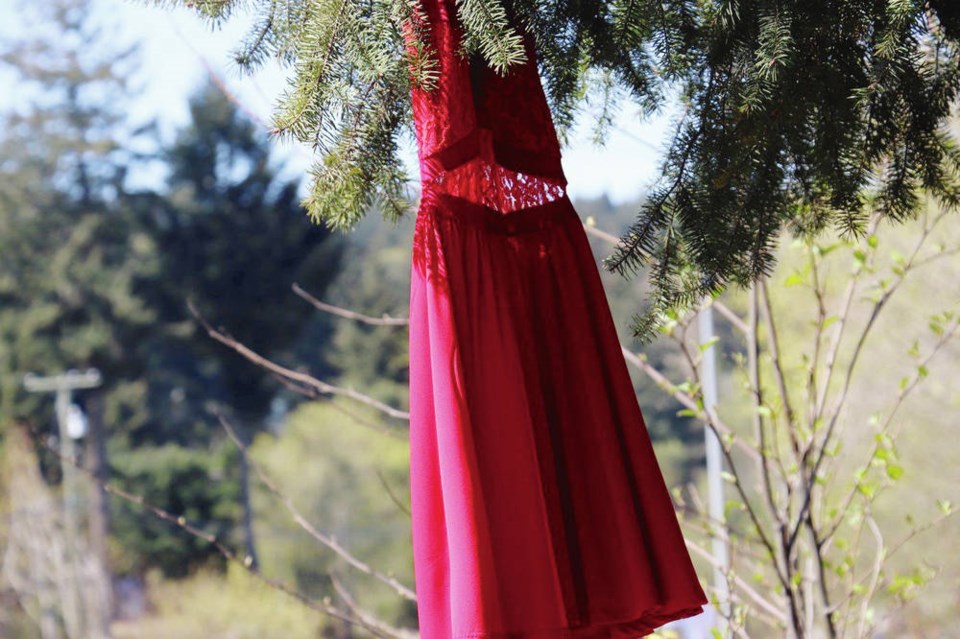A few weeks ago, I created a small community activity that encouraged families to decorate boats and float them in local waterways and post photos on social media. As I delivered little wooden boats to interested participants’ home, I came to one house that had a red dress hanging from a tree at the edge of the driveway.
Hanging red dresses honours and acknowledges missing and murdered Indigenous women. Use of this symbol began in 2010 and is known as the Red Dress Project, originating in Manitoba. Now many different initiatives and organizations promote red dresses to bring awareness to missing and murdered Indigenous women.
When I drove up to the home and saw the dress intentionally hanging from a tree, I felt an emotional response. Hanging a red dress is a strong statement and it demonstrates solidarity.
I am not sure why that one dress connected with me, but I think it is because I didn’t expect to see it. It made me feel appreciation for the people who took the time and effort to hang the dress and make the statement. These statements spark conversations between people and make space for everyone to be reminded.
Red dresses have been popping up on our highways for months now, as part of a local initiative that started on Family Day in February, and dresses continue to appear.
The red dresses bring awareness to an uncomfortable but needed conversation. These dresses represent people and their families. When I see a red dress, I know it represents someone who is gone.
I was disappointed to watch the video of two men removing red dresses along the highway south of Ladysmith. The act is disrespectful and hurtful. We do not know the story behind these actions, but it undermines the work of the people who hung them. It silences this movement and sends the message that these stories should not be told.
It is not easy to see the dresses, because they are meant to remind all of us of the harsh reality that Indigenous women and families face. By having the dresses on display, it demonstrates this an issue that affects everyone, regardless of their heritage. We are all a part of the community, and everyone in our community deserves to be safe.
I have spoken with people whose family members are missing or murdered. I’ve known Indigenous women who have been victimized while hitchhiking along highways. These are tragedies that occur across Canada.
It was beautiful to see Stz’uminus First Nation and the Town of Ladysmith come together to hang red dresses last weekend where others had been torn down. It is acts like this that demonstrate this is an issue that everyone needs to address and acknowledge together.
On Vancouver Island, red dresses can be seen hanging along the highway from Victoria to Port Hardy. We may not be travelling the highways right now, but if you see a red dress hanging in your neighbourhood, take a moment to reflect on what it represents.
This is not just an Indigenous issue, it is a community issue. Everyone has the right to be safe. There are grieving families who struggle to find answers, and hanging a red dress, or taking the time to reflect on what they symbolize, can be a step forward in working together.
May 5th is the National Day of Awareness for Missing and Murdered Indigenous Women and Girls and is also known as Red Dress Day.
Charla Huber is the Director of Communications and Indigenous Relations for M’akola Housing Society.



